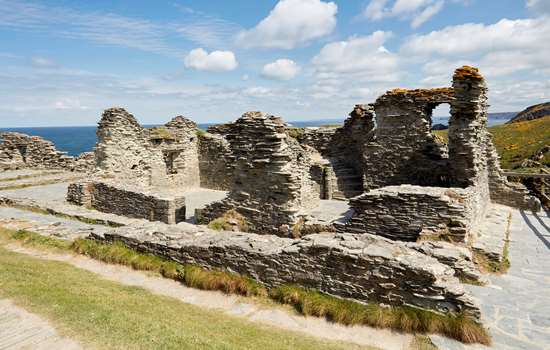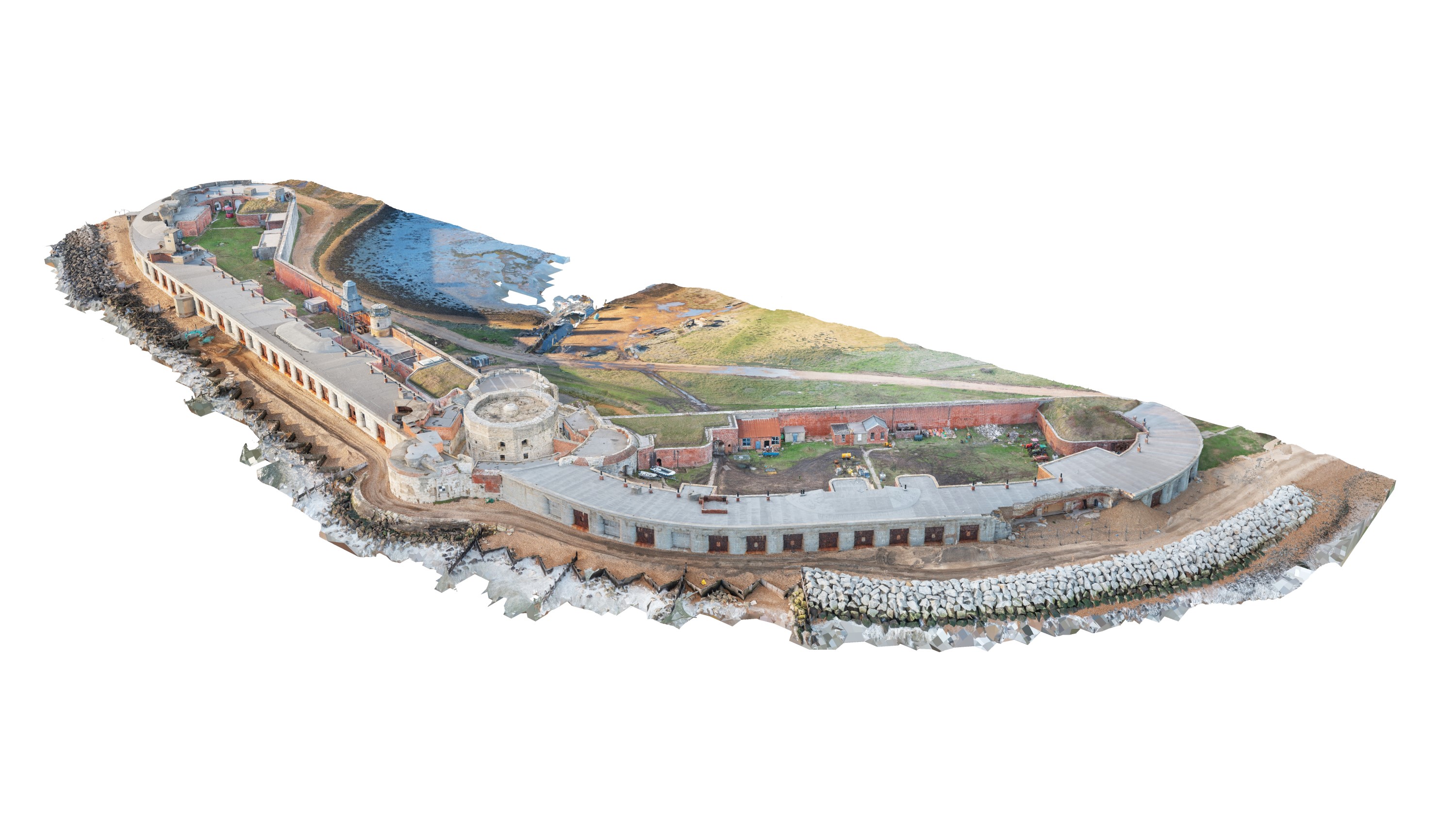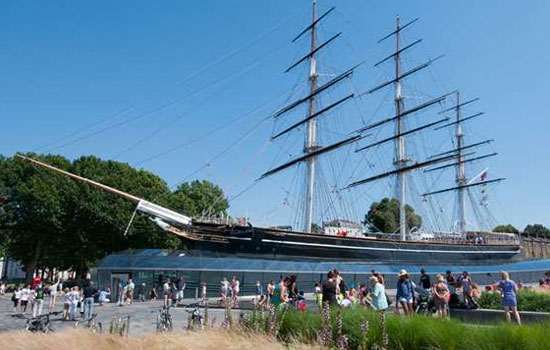There’s barely a ripple disturbing the surface of the river as we make our way from Keyhaven Quay out to Hurst Castle, the imposing coastal fortress built by King Henry VIII to guard the western entrance to the Solent. Out beyond the protection of the shingle spit on which the castle stands, however, it’s another story: as the tides that meet here cause the sea to churn and roar, the Hurst Castle ferry rolls to and fro with the force of the waves.
It’s hard to imagine a better demonstration of the natural and geographical challenges facing Hurst Castle – by far the most exposed of English Heritage’s coastal properties. Which is why I’ve been brought here, in the company of a select group of English Heritage supporters, to find out how the charity is working to care for this remarkable heritage landmark.
It was back in February 2021 that a section of wall on the 19th-century east wing of the castle collapsed after powerful storms exposed and undercut its foundations. What had for centuries been protected by a wide bank of shingle had been laid bare by the fierce action of the tide, with devastating results.
The months following the collapse saw a large-scale project mobilised and were an extremely busy period for English Heritage and Hurst Marine, the family-run business that manages the castle on behalf of the charity. Two years later, however, everyone involved can breathe easier as all the evidence shows that the breach in the east wing has been stabilised.
Feet crunching on the new shingle as he stands in front of the broken section of east wing wall, senior properties curator Roy Porter recalls the sense of urgency in the immediate aftermath of the collapse: ‘The most important thing to do straight away was to stop the damage moving further along,’ he says. ‘Because at either end of the breach, undermining of the foundations continued.’
Supplementary foundations were required to replace the absurdly shallow ones – just four courses of brick and less than a metre of concrete – constructed in the 1860s when armoured wing batteries were built. The solution? Injecting a quick-setting maritime resin into the shingle beneath the exposed section.
‘It goes into all the gaps between the stones and forms a sort of conglomerate, almost like concrete, that provides sufficient stability to keep the walls up on either side,’ says Porter. Careful monitoring followed. ‘There’s been no movement since that work occurred. At both ends of the breach things have been stabilised,’ adds Porter, with relief.
Making this possible meant building a temporary revetment to keep back the tide, protecting both the castle itself and the people whose job it was to prevent its further collapse. Once that was in place, new shingle was brought in to create an area in which to work, before removing the debris of the collapse. Following agreement from Natural England – as the area is designated a site of special scientific interest – the fallen sections of granite wall and the castle’s heavy iron gun shields were moved to further down the spit, their details archaeologically catalogued. They remain there today, providing visitors to the castle with a unique opportunity to grasp the remarkable scale of these mid-Victorian defences. To move the gun shields, which comprise multiple layers of five-inch-thick iron plate sandwiched together with five-inch-thick blocks of brick and concrete encased in an iron frame, required two 50-tonne excavators.
The temporary revetment was then made permanent, giving it a predicted lifespan of at least 50 years. Fittingly, the granite rock armour used around the outer edge came from Norway via Cornwall, which is the source of the granite used in the 19th-century castle walls.
The east wing is now well defended – between the resin, the rock armour and the new shingle, it is now protected by an additional 22,000 tonnes of material. But overall Hurst Castle remains at risk and will only become more vulnerable as the climate crisis leads to higher sea levels and more severe storms in the years ahead. Aided by money raised in 2022’s coastal conservation appeal, which raised over £700,000, English Heritage will continue to support the castle over the coming months and years.
Before winter storms unleash the full fury of the sea on the castle again, further work will be carried out to make repairs to the counterscarp wall on the sea side of the Tudor part of the castle. This involves retrieving the fallen blocks of masonry from where they’re now buried in the beach, then using them to rebuild the wall. Repairs are also required to reinforce the wooden groynes that stand seaward of the wall. It is certain that further enhancement of the sea defences will be required in front of the central and western parts of the castle, and English Heritage and a whole host of experts and partner agencies are currently in an intense phase of developing options and planning for the future.
Touring Hurst Castle with Porter and the appeal supporters who are making this crucial work possible, it’s impossible not to be struck by the scale of the task. But it’s a challenge that the charity, with the help of its generous funders, is rising to in an extraordinary way. And the team is in no doubt that such an effort is absolutely worth it. As Rob Woodside, estates director puts it, ‘People have a strong affinity and love for the coastline and coastal heritage, so we hope they continue to support us.’
Porter agrees. ‘This site is one of the most important in our care because of the long history it represents, but also because it’s such an important figure in the landscape,’ he says. He pauses, gesturing out over the spit, to the sea and the Isle of Wight beyond it. ‘It’s history, landscape importance, local identity, cultural identity, all those things wrapped up in a place like this. And we’re doing our best for it.’
English Heritage is grateful to Julia and Hans Rausing, The National Heritage Memorial Fund and English Heritage Members for supporting the conservation work.
Find out more about Hurst Castle and plan a visitCoastal connections
The Coastal Connections project is a global network of coastal heritage sites brought together to share knowledge and expertise in the face of the challenges of climate change. The initiative was set up early in 2023 by English Heritage and the World Monuments Fund (WMF), an independent organisation devoted to safeguarding the world’s most treasured places, in the wake of Hurst Castle being added to the World Monument Watch List.
While the specifics of the heritage sites might be very different – they range from the Rapa Nui of Easter Island to Methoni Castle in Greece – the challenges they face are similar, so there’s lots of scope for a collaborative approach, particularly beneficial for sites outside the global north.
‘We’re very privileged in England that we have had access to funds for vital conservation but it’s tougher for others around the world,’ explains Rob Woodside, estates director at English Heritage. ‘We’re running engagement sessions to try to come up with resources for people who are dealing with similar issues.’ Those resources will include principles for guiding future management decisions – whether what’s required is new defences or working with communities to record coastal heritage sites before they’re lost.
Find out more about coastal connectionsOn the frontline
Three other English Heritage properties being affected by coastal erosion
-

Piel Castle, Cumbria
This 14th-century Cumbrian fortress was built to guard against pirates and Scots raiders. But now, the castle’s keep and bastions are vulnerable to coastal erosion.
-

Tintagel Castle, Cornwall
Tintagel Castle is an impressive site with history stretching back centuries, but sections of the cliff situated in front of the visitor centre have already been lost.
-

Reculver Towers, Kent
This medieval church sits within one of the earliest Roman forts built against Saxon raids. However, half of the site has been lost to erosion and the rest remains vulnerable.




